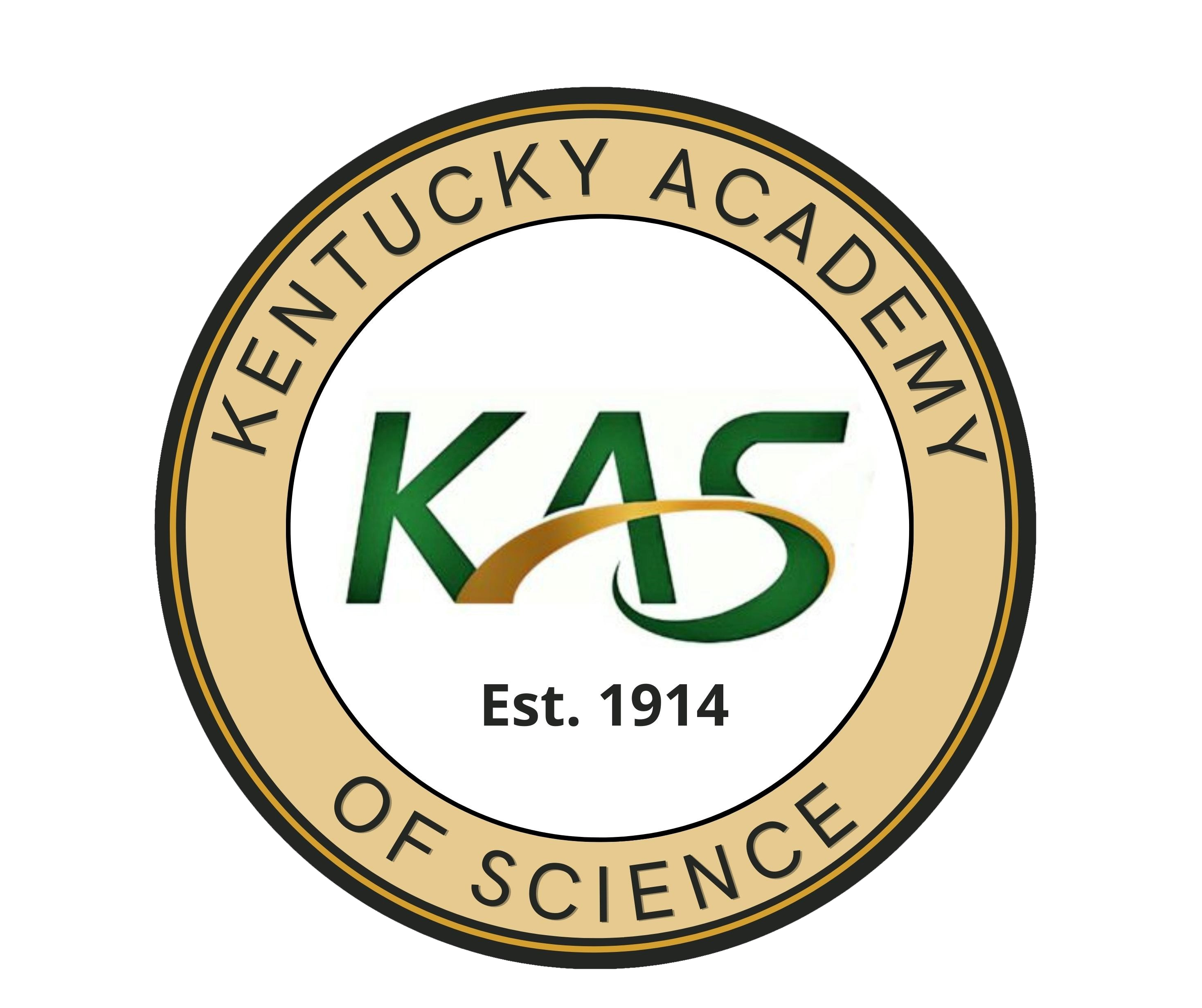Kentucky Academy of Science
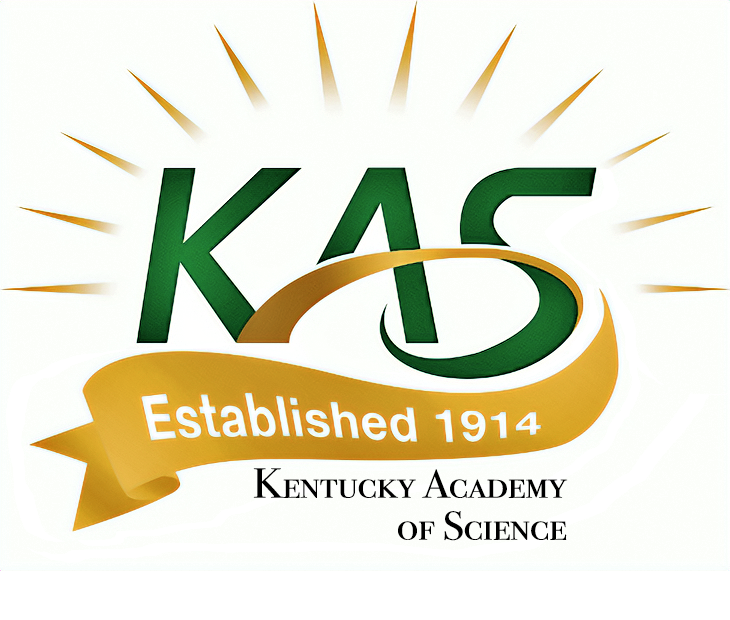
2022 Annual Meeting Program
November 11-12, 2022

Welcome to Morehead State University
Morehead State is at the forefront of STEM education in the Commonwealth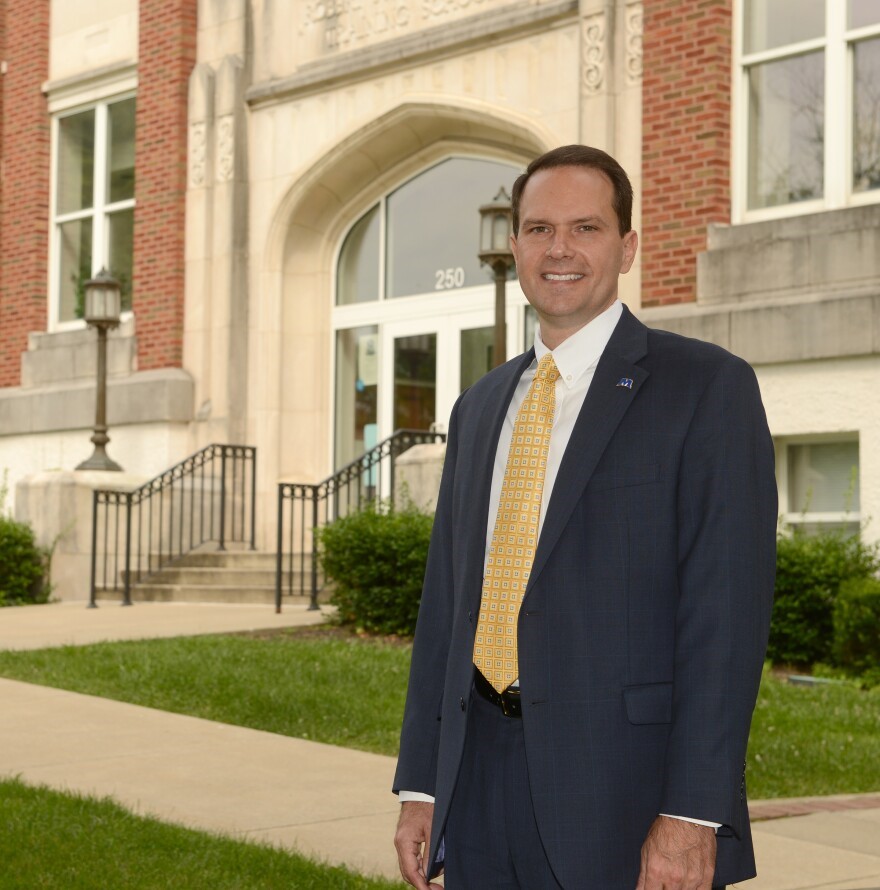
Morehead State University has served generations of students and families through hands-on education and continues to prepare students for the workforce with its selection of cutting-edge STEM programs. Students in all degree fields have opportunities to incorporate STEM into their studies through unique programs and initiatives designed to prepare them for 21st-century careers. Here are just some of the unique offerings available at Morehead State:
- Our program of distinction, the Bachelor of Science in Space Systems Engineering, is one of only a handful of such programs in the nation, with graduates working at aerospace firms, defense contractors and NASA.
- Students in our space systems engineering programs receive hands-on skills and experience in designing, planning, building, and monitoring CubeSats and nanosats, small satellites used for space exploration. One of our CubeSats, Lunar IceCube, is included in NASA's Artemis I mission to the moon.
- The Craft Academy for Excellence in Science and Mathematics is a dual-credit academy for academically exceptional Kentucky students interested in pursuing STEM degrees. The Academy recently launched the Center for STEM+eXcellence, a summer enrichment program that offers STEM-based educational camps and activities to K-12 students throughout Eastern Kentucky.
- The Ernst and Sara Lane Volgenau College of Education at Morehead State encourages future educators to pursue STEM through its Volgenau Scholars program. The renewable scholarship is offered to students pursuing math or science-related teaching degrees.
- The MSUTeach program offers students in STEM fields the opportunity to expand their career readiness by earning a bachelor's degree in their chosen field and a Kentucky teaching certification simultaneously.
- Students at MSU have the opportunity to conduct groundbreaking scientific research as early as their freshman year with our Undergraduate Research Fellowship program. The program partners students with faculty members actively engaged in scientific research and provide them with valuable practical skills that give them an edge in the job market. Students also gain networking opportunities by presenting their findings at local, state, national and international conferences.
- Our nursing program has a reputation throughout Kentucky for producing competent, capable nurses skilled in-patient care. Our programs boast consistent 100% job placement rates. Our students learn in state-of-the-art lab facilities equipped with mannequins that mimic a range of ailments and symptoms.
Dr. Jay Morgan, President, Morehead State University
All events are at Adron Doran University Center, 400 E. Second St., Morehead, Ky 40351 unless otherwise noted
Table of Contents
Welcome the Junior Academy
Code of Conduct
Special Accommodations
Campus Map & Floor Plan
Parking
WiFi at Morehead
Food
Sponsors
Exhibitors
Photo Contest
Thursday Science Night for Teachers
Aquaculture Workshop
DNA in Color Workshop
Thursday Junior Academy Kickoff "Ad Astra" at Space Science Center
View Friday Schedule Grid
View Saturday Schedule Grid
Friday morning November 11
Adron Doran University Center, 400 E. Second St., Morehead, Ky 40351
Cellular & Molecular Biology Oral presentations
Physics & Astronomy Oral presentations
Science Education Oral presentations
Undergraduate Research Forum
Friday afternoon November 11
Adron Doran University Center
Science Advocacy Workshop
Junior Academy Catered lunch - Button Auditorium
Chemistry Oral presentations
Environmental Science Oral presentations
Agricultural Sciences Oral presentations
Health Sciences (feat. Psychology) Oral presentations
Networking Sessions: Health & Biomedical, Agriculture, Chemistry, Environmental Science & Geology, Ecology Botany & Zoology, Engineering Math & Computer Science, Physics & Astronomy, Science Education
Friday Poster Session
Agricultural Sciences Posters
Cellular & Molecular Biology Posters
Chemistry: Analytical & Physical Posters
Chemistry: Organic /Inorganic Posters
Computer & Information Sciences Posters
Ecology Posters
Environmental Sciences Posters
Engineering Posters
Geography Posters
Geology Posters
Health Sciences Posters
Mathematics Posters
Microbiology Posters
Physics & Astronomy Posters
Physiology & Biochemistry Posters
Psychology Posters
Science Education Posters
Zoology / Botany Posters
Friday evening November 11
KAS evening at the Space Science Center
Happy Hour at Sawstone Brewing
Saturday morning November 12
Adron Doran University Center
Engineering Oral presentations
Microbiology Oral presentations
Ecology Oral presentations
Geology & Geography Oral presentations
Saturday Keynote: Professor Andrea Armani - Button Auditorium
KAS Business Meeting & Lunch - Button Auditorium
Saturday afternoon November 12
Adron Doran University Center
Saturday Teacher Workshops
Tree Rings
Color Mixing with Glow Sticks
Amgen Biotech Experience
Geology Field Trip
Cancer Oral Presentations
Zoology/ Botany Oral Presentations
Mathematics Oral Presentations
Computer & Information Sciences Oral Presentations
Climate Science Oral Presentations
Junior Academy Sponsors
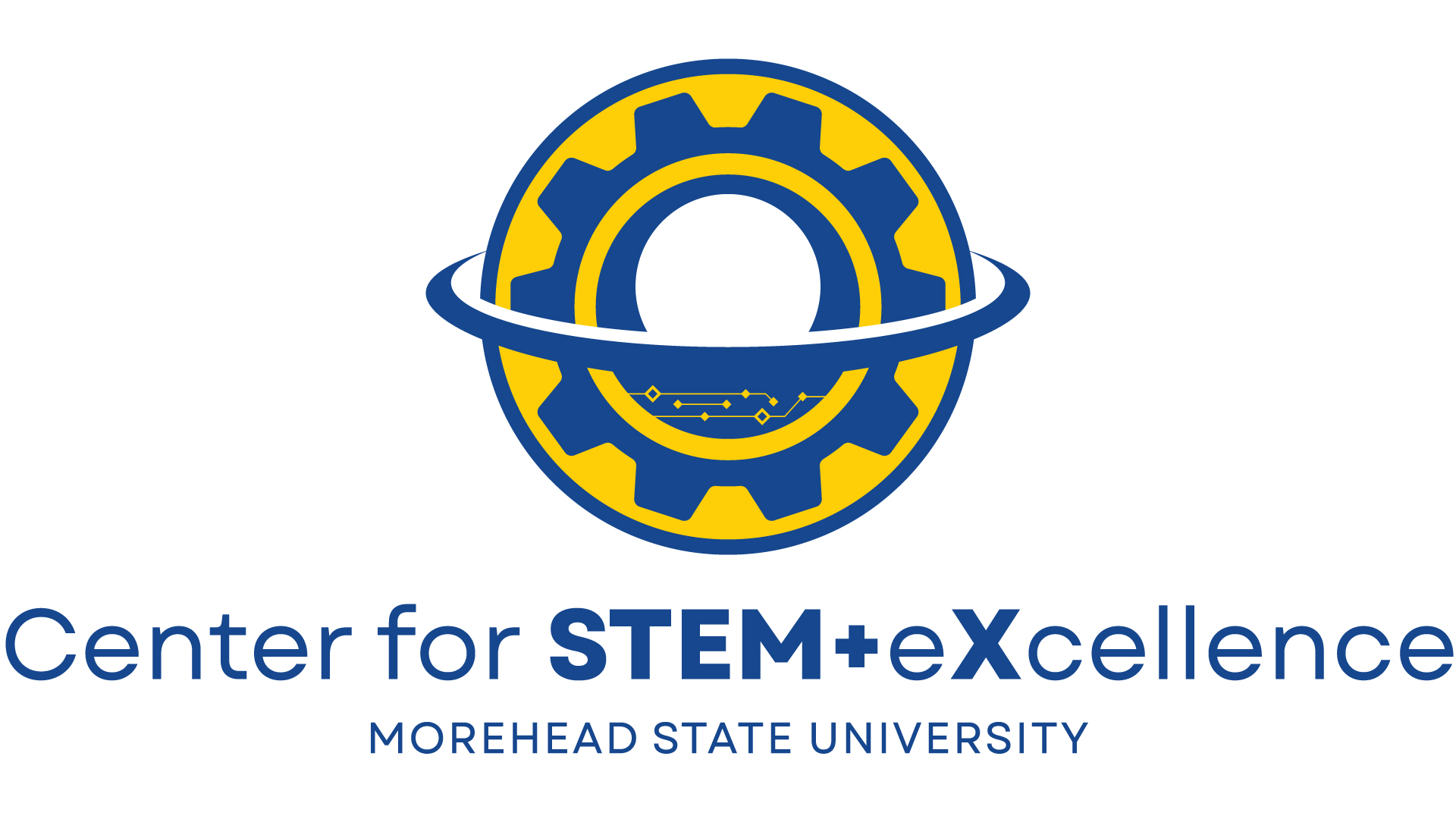
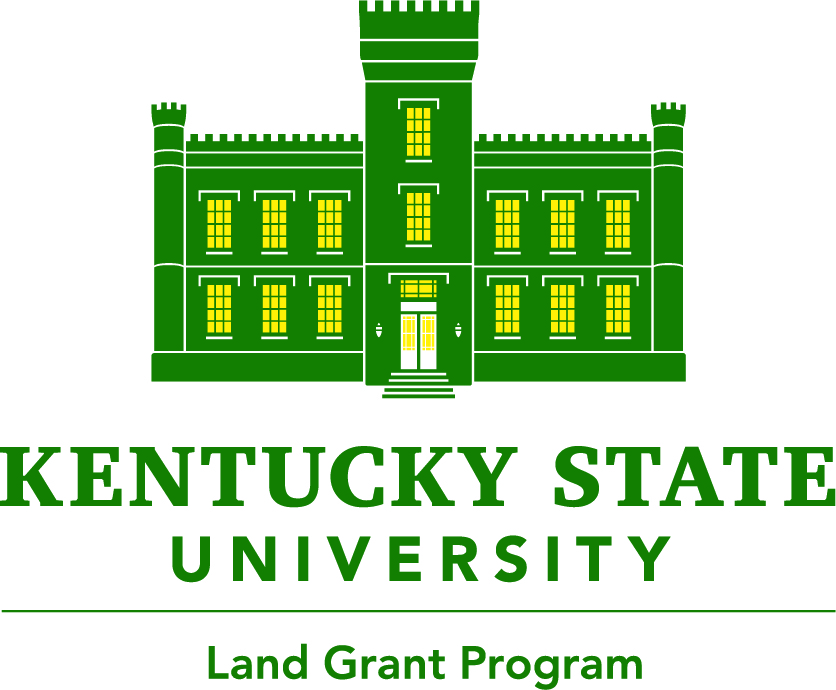
Thank you to our Platinum Level Sponsor
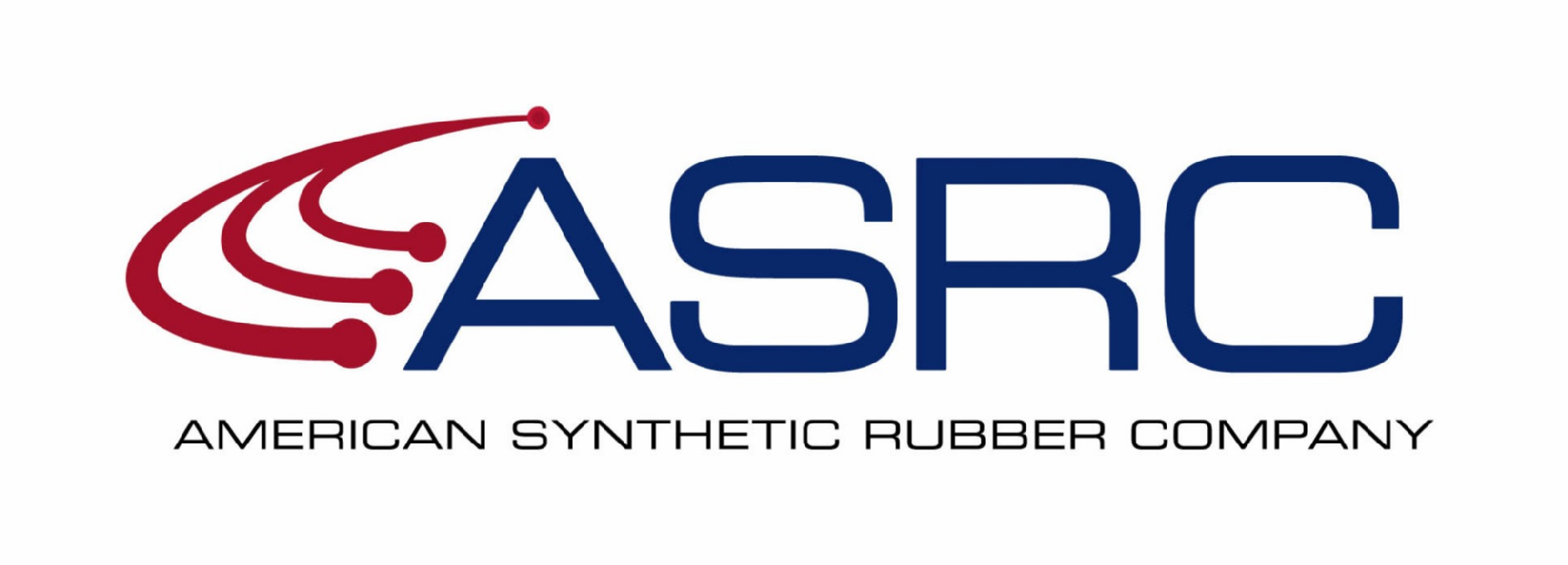
Thank you to our Gold Level Sponsors
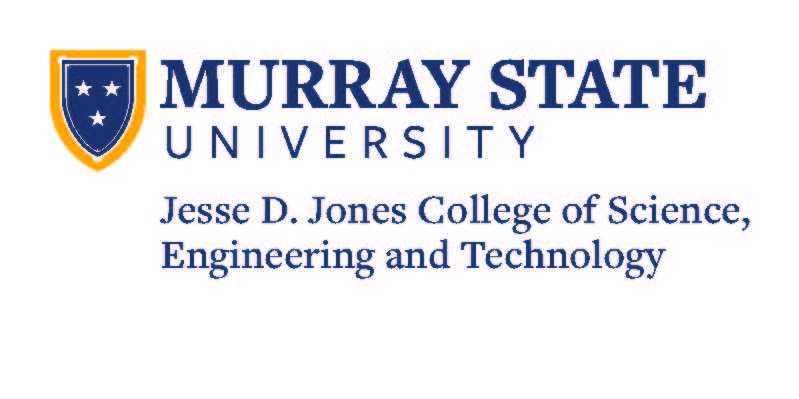
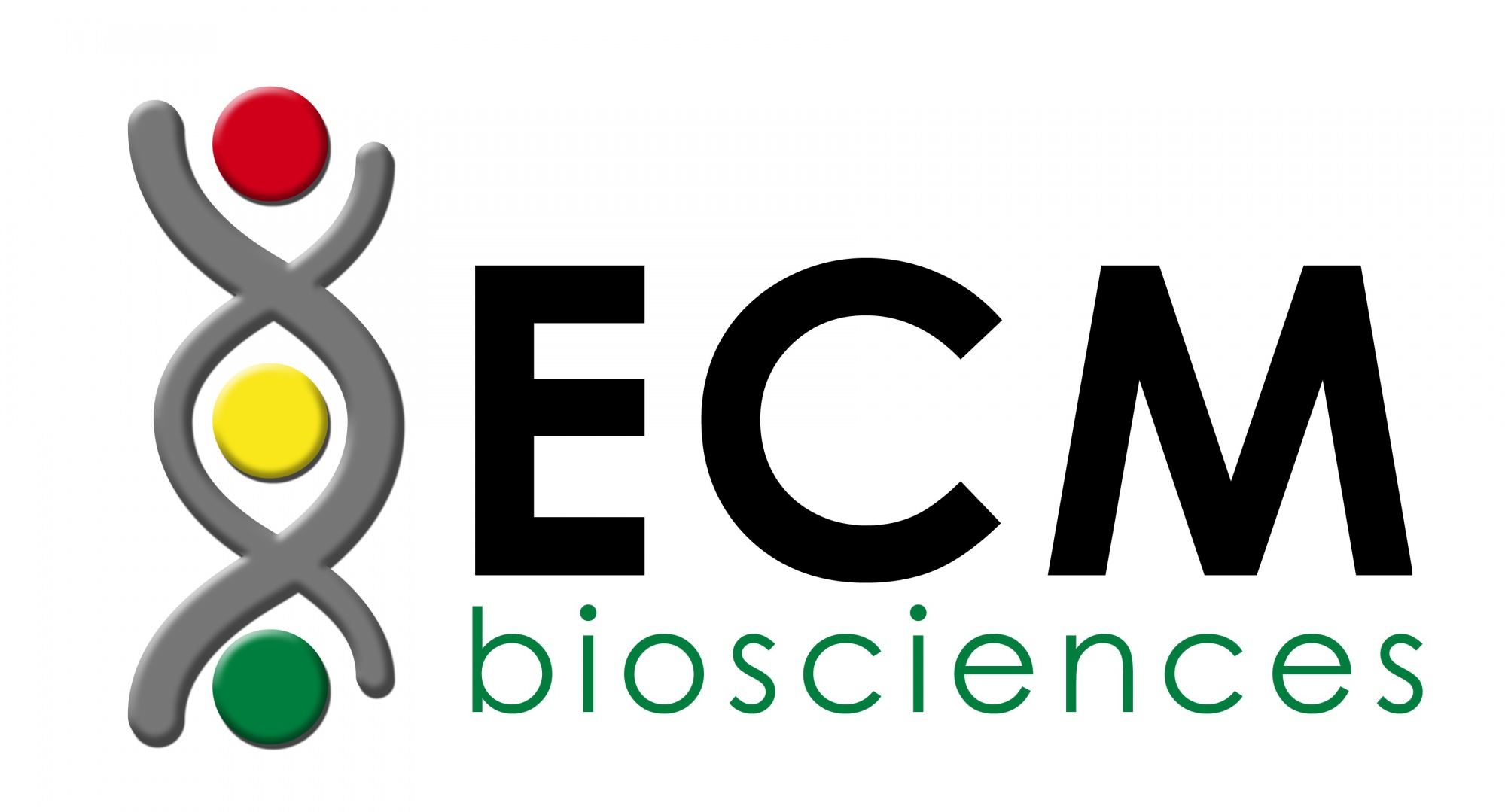
Thank you to our In-Kind partners
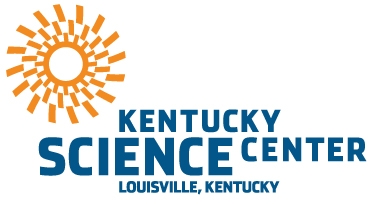
Thank you to our Field Trip Presenters:

and Kentucky Paleontological Society
Visit Our Event Exhibitors
Kentucky Association for Environmental Education
University of Kentucky College of Pharmacy
KY- INBRE at University of Louisville
Taking Flight Next Level
Eastern Kentucky University Center for Outdoor Education and Research
Kentucky State University
University of Louisville Department of Geographical & Environmental Science
Peace Corps
University of Kentucky: Kentucky Geological Survey
ASRC-Michelin
Kentucky Science & Technology Corporation / Advance Kentucky
University of Pikeville Kentucky College of Optometry and Kentucky College of Osteopathic Medicine
Kentucky Heritage Land Conservation Fund
Kentucky Transportation Cabinet District 9
Thank you our Local Arrangements Team at Morehead State University

Dr. Elizabeth Thomas
Dr. Melissa Mefford
Dr. Jen O'Keefe
Dr. Kevin Adkins
and Thank you Taunya Jones, MSU Special Events Planning Manager
Thank you to our Kentucky Junior Academy Planning team at the Center for STEM+eXcellence

Jen Carter
Kristin Beighle
Ryan Arney
Brenda Porter
Karen Cornett
Thank you to KAS Officers
President Jon Dixon
President - Elect Julie Reizner
Vice President Noel Novelo
Past President Trent Garrison
Thank you to our Program Coordinator and Kentucky Junior Academy Director
Melony Stambaugh
Thank you to Our 2022 Section Leaders & Session Chairs
Agricultural Sciences
Shreya Patel, IvyTech Indiana
Anthropology and Sociology
Ann Kingsolver, University of Kentucky
Timothy Hare, Morehead State University
Cancer
Julia Carter, Wood Hudson Cancer Research Laboratory
Courtney Martin, University of Kentucky
Cellular and Molecular Biology
Mahavir Singh, University of Louisville
Sarah Andres, University of Louisville
Chemistry: Analytical/ Physical
Emmalou Schmittzehe, Morehead State University
Laura Rowe, Eastern Kentucky University
Chemistry: Organic / Inorganic
Elizabeth Thomas, Morehead State University
Computer and Information Sciences
Jerzy Jaromczyk, University of Kentucky
Muzaffar Ali, Bellarmine University
Ecology
John Starnes, KCTCS
Ben Brammell, Asbury University
Engineering
Aaron Daley, US Army Corps of Engineers
Seyed Allameh, Northern Kentucky University
Environmental Science
Marvin Ruffner, Asbury University
Jennifer Adler, KCTCS
Geography
Christopher Day, University of Louisville
Charlie Zhang, University of Louisville
Geology
Dan Phelps, Kentucky Paleontological Society
Sarah Arpin, University of Kentucky
Health Sciences
Avinash Tope, Kentucky State University
Louisa Summers, Berea College
Mathematics
Doug Chatham, Morehead State University
Microbiology
Bill Staddon, Eastern Kentucky University
Physics and Astronomy
Marilyn Akins, Bluegrass Community and Technical College
Kevin Adkins, Morehead State University
Physiology and Biochemistry
Amanda Hughes, Georgetown College
Michael Guy, Northern Kentucky University
Psychology
Ilsun White, Morehead State University
Matthew Shake, Western Kentucky University
Science Education
Shreya Patel, Ivy Tech Indiana
Darla French, University of Pikeville
Wilson Gonzales-Espada, Morehead State University
Zoology / Botany
Jeremy Gibson, Kentucky Wesleyan College
David Hayes, Eastern Kentucky University
Thank you Jon Dixon for Cover Design
Thank you Jade Doellman for Graphic Design & Program Layout
2022 KAS Annual Meeting Online Program
Greetings!
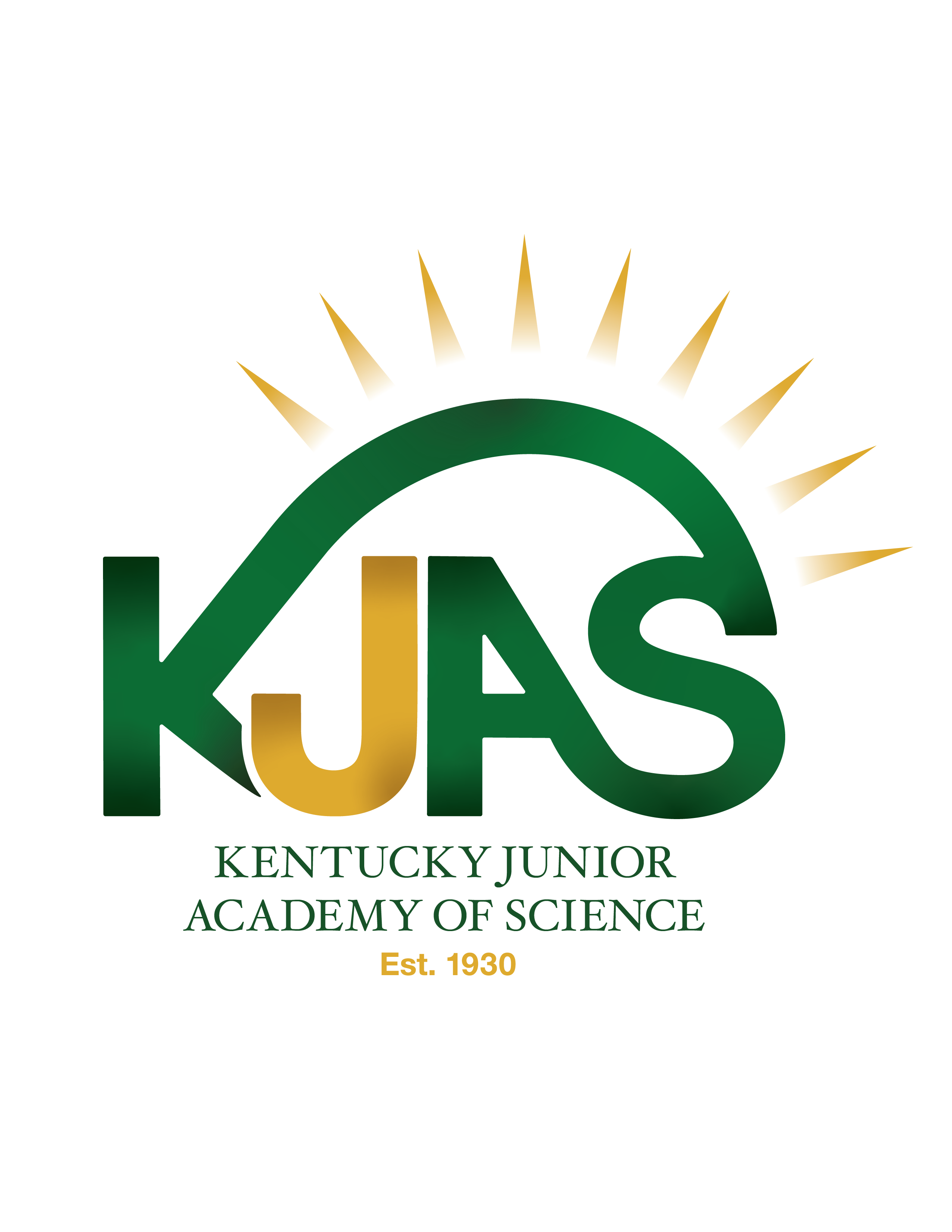
You may have noticed that some of the scientists attending the KAS meeting this year look a bit younger than what we usually see. The good news is that the Kentucky Junior Academy of Science students are now joining with us as we have combined the KJAS spring meeting with the KAS fall meeting. This is a great opportunity for middle and high school students to see college students and faculty in action and help to guide them in their future scientific research.
We have been assisted this year by Morehead State University’s Center for STEM+eXcellence in making new connections to local middle and high school students and teachers. Many of the workshops this year are a direct result of this amazing partnership. We at KAS are so grateful to Jen Carter and her dedicated team for developing a fantastic program for our Junior Academy scientists!
We want to thank everyone who is supporting the Junior Academy and encourage you to make them feel welcome.
Melony Stambaugh Jen Carter
Director, Kentucky Junior Academy of Science Director, Center for STEM + eXcellence
Program Coordinator KAS
KAS Code of Conduct
The Kentucky Academy of Science Annual Meeting is an interdisciplinary professional environment that cultivates scientific discovery and understanding.
Thank you for contributing to our advancement of science by behaving professionally, respectfully and collegially at all times.
Special Accommodations
We want to make this meeting welcoming and accessible for you! Please let us know what you need.
Gender Neutral restrooms are available on the first floor of the ADUC building
A Mothers' Room is available in room 319 of ADUC
A Practice Room is available for presenters most of the day Friday, and Saturday morning in room 320
A Quiet Room is available in Room 322.
Getting Around
Morehead Campus Map
ADUC floor plan
Parking
Connecting to MSU Wireless
Instructions for macOS or iOS
Food
If you ordered box lunches, they will be available Friday in ADUC on the 3rd floor, and Saturday in Button Auditorium.
The ADUC 2nd floor Food Court is open Friday for lunch.
There is a Starbucks on the 1st floor of the ADUC building.
The Rock Dining Hall is open Thursday until 10pm; Friday 7-10am, 11am-3pm, 4-8pm; Saturday 11am-8pm. Breakfast - $7.50 Brunch, Lunch, Dinner - $9. The Rock is about a10 minute walk from ADUC.
Photo contest
Share your creativity in the Annual Meeting photo contest!
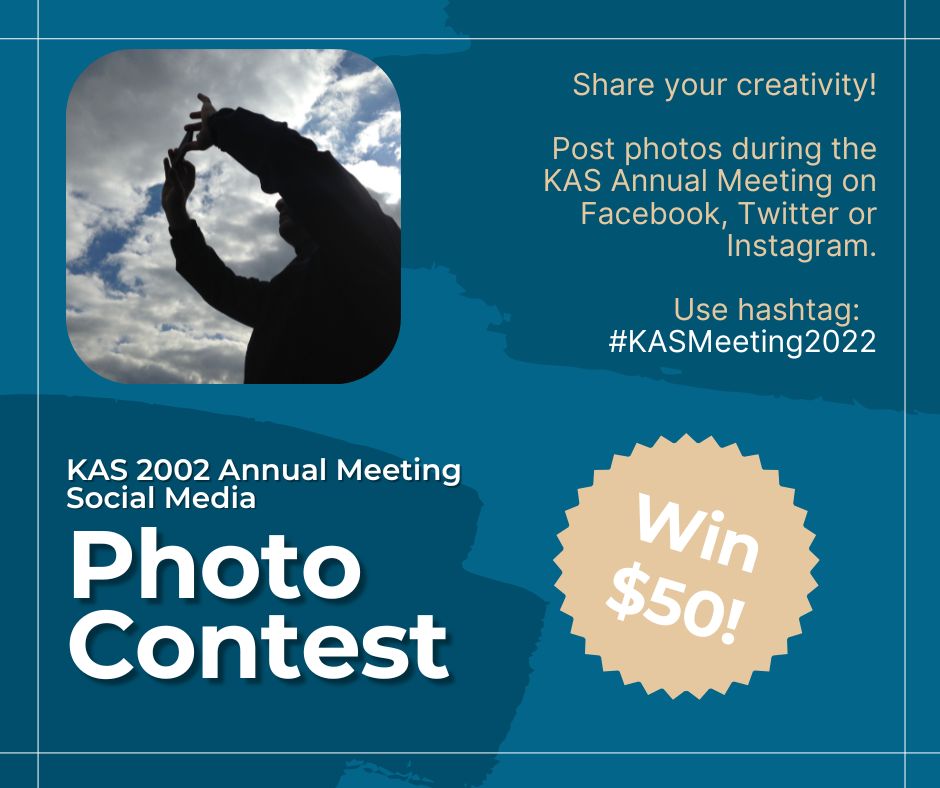
With a phone in every pocket, we’re all photographers now! Please help us share the excitement and action during the 2022 KAS Annual Meeting and let your creativity shine by sharing your conference photos to social media.
You’ll win $50 if your photo is judged as the meeting’s best! You can join the contest by posting photos on Facebook, Twitter or Instagram using the hashtag #KASMeeting2022 . Post them by 8 p.m. on Sunday, Nov. 13.
You’ll find KAS on Twitter with the handle @Kyscientists. On Instagram, we’re kentuckyscience. Find us on Facebook under: Kentucky Academy of Science.
Greeter: Jen Carter, Director, Center for STEM+eXcellence
Welcome to the Space Science Center
5:10 – 5:20 Star Theater
Presenter: Dr. Benjamin Malphrus, Executive Director, Space Science Center
Introduction to the Kentucky Junior Academy of Science Annual Meeting and How to Network
5:20 – 5:45 Star Theater
Presenter: Melony Stambaugh, Director Kentucky Junior Academy of Science
Introduction of Aerospace Professionals and Space Systems Engineering and Astrophysics Students
5:45 – 6:00 Star Theater
Catered Dinner and Professional Networking Experience with Aerospace Scientists and Engineers
6:00 – 7:00 SSC Rotunda
Networking Experience: Exhibits and tours led by Space Science Center staff and students
7:00 – 8:00 Space Science Center
Spacecraft Design and Integration Facility tour
Deep Space Station -17 Mission Operation Center and 21 Meter Space Tracking Antenna tour
Space Engine demonstration by the Astronomy Club
Optical telescopes operated by the Astronomy Club
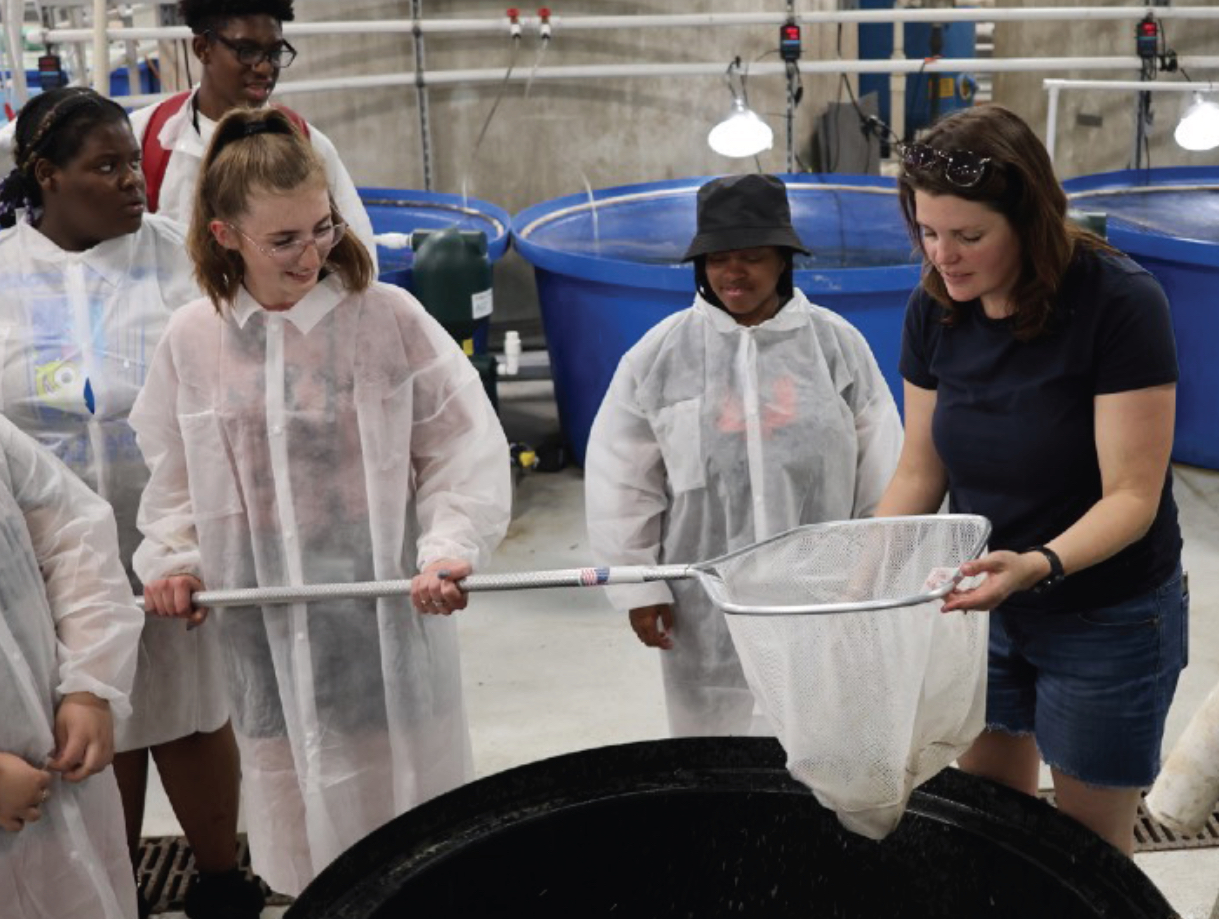 Teachers, Please join us for dinner with scientists before the workshop, beginning at 5pm.
Teachers, Please join us for dinner with scientists before the workshop, beginning at 5pm.This workshop is for high school teachers. Dr. Kenneth Thompson of Kentucky State University will introduce Kentucky State University's new Aquaculture Teacher Manual which will be available for free (hard copy) to teachers who participate in the workshop. The manual is designed to increase secondary teachers‘ awareness and knowledge of this exciting agriculture STEM field. Several schools throughout the state of Kentucky have already implemented this curriculum and it is aligned with the NGSS. Dr. Thompson will share lesson plans connected to this manual, and will bring prototypes of a mini-aquaponics system that can be used in the classroom. Dr. Thompson will also share funding resources to explore for purchasing the equipment.
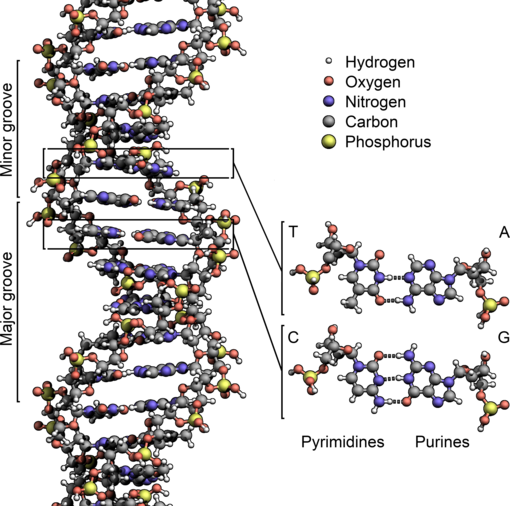 Teachers, Please join us for dinner with scientists before the workshop, beginning at 5pm.
Teachers, Please join us for dinner with scientists before the workshop, beginning at 5pm. The content of this lab quantifies DNA damage through a colorimetric assay. The lesson will primarily be targeted to advanced or high school level chemistry and biology students and is designed for a 24-person classroom, to be accomplished in a 75 minute class.
This study had two aims: 1) to test whether exposure to biphenyl (no chlorine substitutions) is less potent than exposure to PCB126 (5 chlorines) for the negative effects on offspring glucose intolerance and body composition, and 2) to determine the effects of perinatal exposure to biphenyl or PCBs on the expression of certain genes.
Ninety female mice were split into three treatment groups, vehicle, biphenyl, and PCB126. The dams were exposed via oral gavage three times throughout the study at 72 hours before mating, gestational day seven, and postnatal day seven. Offspring body weight, lean mass, fat percentage, and glucose tolerance were monitored as they aged. Mother and offspring livers were harvested to quantify the expression of three targeted genes.
Biphenyl exposure was less potent than PCB exposure for the male offspring where the PCB group showed higher body weight and fat percentage but lower lean mass when compared to the biphenyl group. The PCB group also showed higher glucose levels. However, the female offspring showed no differences across any of the treatment groups. The exposure to PCB126 affected the expression of the targeted genes while biphenyl exposure did not differ from vehicle controls. These data suggest that PCB dechlorination may be an effective remediation in the environment.
Response to Tissue Damage in Neonates
Many infants undergo surgeries or other injuries during their first few weeks of life. However, most pediatric pain is left untreated and can lead to increased or chronic pain in adulthood. The mechanisms underlying the neonatal pain pathway are not clear and need to be investigated to create effective treatments or therapies in the future. Astrocytes have recently been found to modulate pain sensitivity in adults after tissue damage but their response during the neonatal period have not been studied. As a result, the present study investigates whether astrocyte-specific genes are upregulated or downregulated in the dorsal horn of the spinal cord in response to a hind paw incision at postnatal day 3 (P3). Mice were harvested at post-incision day 1, 4, and 7 and the tissue was used to obtain cDNA to perform qPCR for each target gene (Kir4.1, Slc1A2, Slc1A3, Aqp4, Thbs1, Thbs4). The results showed a significant effect of time related to relative astrocyte gene expression except for one gene, but no effect of incision. These results do not provide support for a broad transcriptional reprogramming of spinal astrocytes following surgical injury, but further research should be conducted to examine other astrocytic genes and time points.
Alterations in genome stability have been observed due to changes in AdoMet levels in the budding yeast, Saccharomyces cerevisiae. SAM1 and SAM2 are paralogs that encode the same enzyme that produces AdoMet. Interestingly, their removal has been found to alter the amount of AdoMet in opposite ways as well as change genome stability in inverse manners. Our lab aims to understand the different changes that might explain why the loss of sam1 increases AdoMet levels and genome stability while the loss of sam2 decreases AdoMet levels and genome stability. Bioinformatics tools were used to explore Differentially Expressed Genes (DEG), from RNA-Sequencing experiments on these strains to more globally understand changes occurring as a result of these mutations. Results from these studies suggested that sam1 and sam2 loss might lead to differences in pathways that synthesize and utilize ATP. ATP and methionine are the components of the AdoMet synthesis process. Next, we are completing an experiment to measure intracellular ATP concentration alterations due to these gene mutations. This ATP assay will give us a direct measure of ATP levels that we then may be able to tie back to our DEG data to show the mechanisms of variation.
The Cosmic X-ray Background (CXB) is the diffuse emission of hard X-rays (3-300 keV) that is observed across the whole sky. The general consensus for the sources of the CXB (particularly at higher energies) are heavily obscured active galactic nuclei located at a moderate redshift. To explore the properties of the CXB further (such as whether flux variations are present at different angular scales), the Space Science Center at Morehead State University is developing CXBN-3 (Cosmic X-ray Background Nanosatellite 3), the successor to the nanosatellites CXBN-1 and CXBN-2, both of which had a very similar objective: to measure the intensity of the CXB within the energy range of 30-50 keV with an uncertainty of less than 5%. The CXB peaks with an intensity of ~30 keV, and by resolving this peak we can better constrain current models of the obscured AGN population and develop an accurate understanding of the temporal evolution of AGNs over a large fraction of the age of the Universe.
This presentation will summarize the previous work done on this subject, analyze the data obtained by past missions, and relate this previous work to the CXBN-3 mission objective. This work is crucial not only in the development of CXBN-3 (as it will establish the requirements for its subsystems and instrumentation), but also for advancing the technology of resolution of astronomical observations conducted at X-ray energies.
facilitate spatially resolved spectroscopic analyses at small angular scales of these sources. These observations allow the search for variations in cosmic-ray acceleration conditions (if present) at different sites along the leading rims of these SNRs. We present a spatially resolved spectroscopic analysis of archival Chandra observations made of G330.2+1.0, a Galactic SNR known to feature almost exclusively synchrotron radiation in its X-ray spectrum. Our initial fits with simple power law models produce photon indices ranging from 1.9 to 2.5, consistent with a synchrotron radiation. We are also using radio data of this SNR to apply more stringent synchrotron-based models to obtain estimates of the maximum energies of cosmic-ray electrons at different radio-bright regions of G330.2+1.0. Initial results will be presented and discussed.
Since 2010, the authors have been providing paleontology and earth science-focused professional development workshops to teachers in Indiana and Kentucky. Over that time, we learned some best practices in delivering workshops that translate to real results in the classroom and can be enjoyable for teachers.
Our approach has varied over the years, but what we have found most successful involves A) hands-on in-person engagement with participants, B) ongoing post-workshop engagement C) the delivery of resources and supplies for direct classroom use, and D) partnership with other organizations like parks, museums, and businesses. While not essential, modest external funding (including an education and outreach grant from the Kentucky Academy of Science) made a noticeable difference in what we could provide to participants and enhanced what the teachers were able to bring back to their own classrooms.
Professional scientists and educators have an opportunity to launch their own successful professional development workshops with the model presented here, as a vehicle for enhancing science education across the commonwealth. Working with K-12 teachers has a multiplying effect, in that by reaching teachers means that you will also, by extension, impact their students, year after year.
The teaching collaboration reinforced our understanding of our disciplinary and knowledge limitations and emphasized the need to rely on those with the appropriate expertise. This presentation discusses our observations and reflections we gleaned from joint educational endeavors.
In this undergraduate capstone project, Wolfram Mathematica was explored as a means of enhancing understanding of mathematics. Upon reaching familiarity with Mathematica and the Kentucky Academic standards, the CAS was used to develop lesson plans based upon these Kentucky Academic Standards, including complex numbers. These lesson plans include demonstrations from the Wolfram Demonstrations Project, intended for use in education and research. In addition, a reflection about the applicability of Mathematica to the standards and the viability of CAS use in the classroom is included.
Panelists will discuss how they found a research mentor, how to fit in research with academics and a social life, what college life is like, and how they have overcome any challenges. Attendees will have the opportunity to participate in a Question & Answer session with the panelists.
Panelists:
Chase Yost, Bellarmine University
Alina Koch, Morehead State University
Mara Stout, Morehead State University
Michael McLeod, Kentucky State University
JT Dials, Morehead State University
 KAS Communications and Policy Director Rob Weber will share tips and tools that you can use to help give the science community a strong voice at the State Capitol and everywhere else policy decisions are made. Rob will also review top issues under consideration in Frankfort and offer a brief preview of the Kentucky General Assembly's 2022 legislative session.
KAS Communications and Policy Director Rob Weber will share tips and tools that you can use to help give the science community a strong voice at the State Capitol and everywhere else policy decisions are made. Rob will also review top issues under consideration in Frankfort and offer a brief preview of the Kentucky General Assembly's 2022 legislative session.A former newspaper journalist, Rob served as the Public Information Manager for the Kentucky Legislative Research Commission before coming aboard KAS. He is a graduate of Leadership Frankfort and served as an officer for organizations including the Kentucky Association of Government Communicators, Toastmasters International, and the national Legislative Information and Communications Staff Association.
A 6-week study was conducted to evaluate the influence of temperature on production of fingerling LMB. Seven recirculating aquaculture systems with four aquaria per system were randomly assigned a temperature treatment (15, 18, 21, 24, 27, 30, and 33°C). Each aquarium was stocked with 25 feed trained fish (6.5g ± 0.40/ fish) and fed pellets (45% protein, 20% fat) to satiation twice daily. Water quality was monitored to maintain suitable conditions for LMB growth in each system. At harvest, length, and weight of each fish in each aquarium was recorded.
Temperature significantly affected food consumption, specific growth rate, and feed efficiency. Mean value of 125% for maximum feed efficiency occurred at 24℃, whereas maximum growth rate (3%/day), and food consumption (359g/rep) was greatest at 27℃. Regression analysis revealed best fit for the data with a third order equation and respective R2 values of 89%, 94%, and 94%.
This study generates empirical data for creating a feeding protocol for LMB across wide temperature range.
Fruit -1) and New Girl (106 g fruit-1). Based on the UDSA tomato grades and the results obtained, we concluded that variety Brandywine grown in chicken manure amended soil is the best candidate for growing tomato.
Key words: Manure, USDA fruit grades, Yield
Room 301: Physics & Astronomy
Room 310: Health & Biomedical Sciences
Room 311: Science Education
Room 320: Psychology
Room 321: Ecology, Botany, and Zoology
Room 322: Engineering, Math & Computer Science
Room 325: Earth & Environmental Sciences
Room 326: Agriculture
Room 329: Chemistry
The KAS / KJAS poster session includes a reception with hors d'eouvres, and science demonstrations from Morehead State University student organizations. Talk to fellow scientists about their research and chat with our exhibitors and sponsors about career opportunities.
4-7 pm - Mingle, eat, chat with poster presenters
5 pm - Judging will begin for student posters
Climate change has been a major concern when it comes to agricultural output such as Soy beans, wheat, tobacco and corn in the State of Kentucky. There is a growing need to determine the correlation between climate change and agricultural produce and predict the future trends and relations between these two variables.
The objective of this paper is to gather, and model data to determine the correlation between the change in climate and change in quantities in agricultural produce. There is obviously several factors that determine the output in agriculture, but this study will be controlled to hold other factors constant and solely study Climate as the only main changing factor that affects the amount of output in agriculture.
To forecast the possible consequences of climate change on agricultural yields, a model of how crops respond to weather is required. Because forecasts from various models frequently differ, understanding the reasons of this disparity is critical to constructing a more comprehensive picture of climate change's potential consequences.
The employment of statistical models trained on historical yields and certain basic meteorological parameters, such as growing season average temperature and precipitation, is a typical strategy. We employ a perfect model technique to investigate statistical models' capacity to predict yield responses to variations in mean temperature and precipitation.
Males of many field cricket species fight each other in the context of mate acquisition, with previous fights having a carryover effect, i.e., males that lose an initial fight are less aggressive in an immediate subsequent fight ('loser effect'). Previous work has shown that this reduction in aggression can be reversed by motor activity, such as a short bout of flight when the losing male disperses. Gryllus rubens males are flight dimorphic, as males can be flight incapable or capable. We tested if aggression can be similarly reset in flight incapable males by forcing flight motor activity. Preliminary analysis suggests that flight incapable males that lost the previous fight were equally aggressive in the subsequent fight, no matter if they engaged in flight (motor activity) or not. This lack of reduction in aggression after losing might be beneficial to flight incapable males since they cannot avoid aggressive encounters as easily. Thus, in contrast to flight capable males, flight incapable males seem to lack an aggression resetting mechanism. Further analysis will compare aggression levels between flight incapable and capable males.
Alzheimer's Disease (AD) is a progressive neurodegenerative disorder that is characterized by the pathological accumulation of aggregated tau protein in neurofibrillary tangles and amyloid beta plaques. The spreading of the pathological forms of tau occurs from neuron to neuron in a prion-like way that is mediated by receptors such as the low-density lipoprotein receptor-related protein 1 (LRP1). However, studies employing cells genetically deficient in LRP1 reveal that other receptors are involved in tau trafficking. We hypothesized that one of these receptors may include sortilin receptor protein 1 (SORLA). SORLA is an extracellular and intracellular receptor that belongs to the VPS10P domain family of neuronal sorting receptors. SORLA is both structurally and functionally similar to LRP1 and can internalize proteins. However, different from LRP1, SORLA can also sort proteins among intercellular components such as early and late endosomes and the Golgi.
The objective of this study was to determine if SORLA is capable of mediating tau uptake and to identify the intracellular compartments SORLA traffics tau to. Methods included passaging cells, transfecting cells, labeling TAU-594 Alexa-Flour 594, Tau-594 incubation, antibody incubation, and imaging slides with confocal microscopy.
Our results indicate that: (1) SORLA transfection increases tau uptake (2) SORLA and tau co-localize in H4 cells (3) some SORLA and tau co-localize with markers of early and late endosomes. Future studies will quantify the extent of colocalization with endosomal markers to identify what intracellular trafficking pathways are operating.
For several years in the undergraduate Genetics course (BIOL 304L), students have collected and sequenced a portion of their MC1R gene to identify the presence or absence of variants. The results have been limited to the in-class analysis, and no data from the samples have ever been used in any type of publication or presentation. Here we analyze the de-identified aggregate data from eleven semesters (fall 2011 through spring 2016, representing roughly 500 individual sequences) to discern the frequency of variants in our data. We compare our findings to existing data from other populations and draw conclusions about why we see the frequencies that we do in our student population.
To test this, we first tested the toxicity of E162 and the effect of E162 on chromium uptake. Secondly, we used cell counting kit 8 (CCK-8) and colony formation assay to test the effect of E162 on the short term and long-term cell viability of cells treated with zinc chromate. Lastly, we used CellRox assays to test if E162 alleviates Cr(VI) induced cytotoxicity.
E162 did not show any obvious toxicity up to 6mg/ml and does not appear to decrease chromium uptake. Chromium decreases cell viability in a concentration dependent matter, and E162 counters this effect. Chromium also decreases the colony formation ability of cells, which was restored to some extent by E162. Cr(VI) induces ROS production in a concentration dependent manner at up to 0.2 μg/cm2 then drops at 0.3μg/cm2. E162 decreases ROS production after treatment with 0.1μg/cm2. This alleviating effect seems to disappear at higher concentrations.
In conclusion, E162 alleviates the cytotoxic effects of Cr(VI) on lung epithelial cells, by inhibiting Cr(VI)-induced oxidative stress.
than usual. Microphthalmia can also be characterized with other ocular defects
such as coloboma and cataracts. In our study we attempted to use Sox4 mutant zebrafish because defects in Sox4 cause microphthalmia as well as coloboma. In our research we attempted to develop a procedure that would determine whether drugs can be applied to
Sox4 mutant embryos and prevent development of small eyes. We proposed to
find conditions where drug treatment would have no effect on wild type embryos
but measurable effects on Sox4 mutant eyes. We chose the drug Ventromorphin 1
(VM1), a BMP agonist, for this study.We were able to show that high concentrations of VM1 had the predicted effects on zebrafish development and we identified a VM1 concentration that had no significant effect on embryo eye size or overall embryo appearance. We also found that Further research is needed to determine
whether VM1 is able to prevent small eyes in Sox4 mutant embryos. More than 1 uM VM1 has an obvious affect on zebrafishdevelopment.We didn't detect small eyes in the Sox4a mutant embryos, therefore we couldn't test our original hypothesis
Progressive pancreatic ?-cell dysfunction is a principal antecedent to the development of type 2 diabetes, yet little is known about the underlying molecular mechanisms. In this study, we demonstrated that exposure of the rat insulinoma cell line (INS1 832/13) to chronically elevated glucose levels resulted in ?-cell dysfunction characterized by significantly decreased levels of insulin expression. Change in insulin expression was concomitant with a dramatic reduction in the expression of the Krüppel-like transcription factor, Gli-similar 3 (Glis3). Glis3 overexpression in INS1 cells maintained in chronically elevated glucose partially rescued insulin levels, while CRISPR/Cas9-mediated knockdown of Glis3 resulted in a sharp loss of insulin expression. FAIRE and ChIP analyses further indicated that Glis3 expression coincides with significant changes to the chromatin architecture near the insulin promoter. Finally, Glis3 overexpression or knockdown resulted in increased or decreased expression of the ?-cell maintenance factor, v-Maf musculoaponeurotic fibrosarcoma oncogene homolog A (MafA), respectively. Luciferase reporter assays provided evidence that Glis3 activates transcription of MafA directly through binding to a pancreas-specific enhancer. Collectively, these data identified Glis3 as a critical factor implicit in ?-cell dysfunction and a potential therapeutic target for the treatment or prevention of type 2 diabetes.
We identified 37515 SNVs in G4 regions using variants in COSMIC catalog and 2115 SNV from CLINVAR. 7236 of the COSMIC variants (19.3 %) and 416 (18%) of the CLINVAR variants likely result in a loss of a G4 structure. We identified 2728 SNVs from COSMIC and 112 SNVs from CLINVAR that have the potential to gain a G4 structure. We find enrichment of the term 'Gonadotropin-releasing hormone secretion' with 21 genes in this pathway having at least an SNV that destabilizes the G4. We observe a higher selective pressure in the coding region on the template strand, which has a 3-fold decrease in the number of G4 mutations as compared to the non-template strand using COSMIC database whereas an equal proportion of SNVs were observed among intronic, promoter and enhancer regions across template and non-template strand. Using GO and pathway enrichment analysis, we observe genes with a single variant that is able to cause G4 forming propensity in coding region are enriched for Regulation of Ras protein signal transduction (n=15,N=215, FE=5.5, 2.8E-05 FDR,BP) and Src homology 3 (SH3) domain binding (n=13,N=141,FE=7.3, 1.8E-5, FDR,MF) which are important factors for cell proliferation and cytoskeletal modifications through proline domains.
The aggregation of N-terminally acetylated alpha-synuclein protein (NAcα-Syn) is a cardinal feature of Parkinson's disease (PD). These aggregates possess a high concentration of dityrosine, which is considered a PD biomarker. The Lucas group has established that dityrosine can form through redox chemistry that occurs following the coordination of copper ions to NAcα-Syn in vitro. To further understand the intrinsic dynamics of NAcα-Syn, the Lucas group has also been examining the photo-initiated crosslinking of NAcα-Syn to determine how copper and iron affect the global protein structure and protein-protein contacts. In 2020, the intrinsic conformational dynamics of NAcα-Syn and the influence of FeIII/II coordination on the structural configurations of this protein were initially reported. Crosslinking events were confirmed to be tyrosine-derived. The goal of this research will be to utilize and investigate the photoinduced crosslinking of the amino acid, tyrosine, in order to quantify the total crosslinks within the protein and to identify the nature of the crosslink. We will also investigate the crosslinking of the substituted phenol, 2-tert-butyl-4-methylphenol, for comparison to tyrosine. We will conduct these analyses using fluorescence spectroscopy, HPLC, and LCMS. Through this research, we will provide insight on the fundamental properties that influence protein-derived tyrosine crosslinking.
Khuyen Ho, Adrienne Hafley, Olivia Villaflor, and KC Russell
The purpose of this work is to prepare either m4- or o,m,o,m-oxacalixarenes that have one or more amino acids on their periphery. Calixarenes, as their name suggests (calix is Latin for cup), are cup-like structures composed carbon-bridiged arenes that are often capable of serving as hosts for small molecules. Oxacalixanes are a subclass were the arenes are bridged by oxygen atoms. Interest in oxacalixarenes has grown significantly in recent years because of their straight forward synthesis. While there are many examples of oxacalixarenes there are none with chiral appendages. The presence of chairal enters on the oxacalixarene periphery may provide opportunity for chiral recognition. Furthermore, the presence of an amino acid creates a location to add additional amino acids using standard synthetic techniques. Our group has focused on either commercially available L-DOPA as a precursor to o,m,o,m-oxacalixarenes or 3,5-dihydroxyphenylalanine as a precursor to m4-oxacalixarenes. This poster will present our progress in the synthesis of both of these oxacalixarenes.
The first step of a typical 3-step sydnone synthesis involves aniline reacting with either bromoacetic acid or chloroacetic acid and sodium acetate, resulting in N-phenylglycine. This undergraduate research project involves the investigation of the "best" method for synthesizing various N-phenylglycine derivatives. This first synthetic step is typically heated at 60 degrees Celsius for 14.5 hours. Newly purchased HBN Smart Plugs and an Ipad are being employed to control the starting and stopping of the heating process. This investigation compares chloroacetic acid or bromoacetic acid reacting with either aniline, p-bromoaniline, or p-chloroaniline. Comparing the yields, cost, and product purity will help decide which synthetic method is 'best'.
growth, and reduced long-term performance such as less milk production, which makes BRD a financial burden on a farm's
economy. Precision technologies, such as accelerometers, automatic feeders, and cameras have been extensively used to collect,
summarize, and interpret changes in baseline dairy cattle behavior. While some efforts to evaluate the presence of statistical
relationships between calves' behavior and BRD status have been made, there is very little research in pairing such technologies
with manual examinations to improve the accuracy and cost of BRD monitoring. In this paper, we propose a framework for
diagnosis and early prediction of BRD in calves. This framework is composed by a machine learning model as well as by a
cost-sensitive feature selection problem called Cost Optimization Worth (COW). COW maximizes prediction accuracy given a
budget constraint. We show that COW is NP-Hard and propose an efficient heuristic with polynomial complexity. We validate
our methodology on a real dataset of 46 automatic and manually collected features, representing 106 calves observed during the
preweaning period of 50 days. Our results show that our machine learning model can correctly classify a sick cow with a 97%
accuracy and up to 5 days prior to BRD diagnosis, outperforming a recent state-of-the-art approach. Furthermore, our feature
selection results show that in a low-budget scenario, manually collected features are more valuable than automated features in
detecting sick cows. Conversely, in a high-budget scenario, automated features report higher accuracy for the early prediction of
BRD.
Single-Cell RNA-sequencing (scRNA-seq) and its resulting data (cell-by-gene expression matrices) are valuable tools to gain insight into the transcriptome of cells, and the volume of publicly available data increases constantly. Methods for integration, comparison, and clustering of these datasets thus hold great importance for understanding transcriptomic dynamics of any biological process from a meta-analytical perspective. Persistent Homology (PH) is one possible method for determining the relatedness of datasets (allowing clustering), that comes from the field of Topological Data Analysis (TDA). From a mathematical perspective, PH summarizes the topological features (or "shape") of a collection of cells (or gene expression vectors), in a way that is deformation invariant. Thus, PH should yield relatedness measures (distances) between collections of cells that are informative of differences without respect to batch or possible warping/deforming effects. PH was applied to a prefrontal cortex dataset, with collections of cells from disease and control samples. PH will then be applied to known cell groups from a cell atlas, as well as groups of cells from vastly different tissues. The resulting clusters will be analyzed for biological meaning and correspondence to the group metadata, investigating if it is worthwhile to further pursue the effectiveness of PH clustering.
Wetlands provide habitat and critical ecosystem services for a wide range of organisms, including bats. However, much about bats and wetlands is still unknown. This study examined bat activity in Myotis and non-Myotis bat species and woody vegetation in both natural and constructed upland-embedded wetlands on the Daniel Boone National Forest. To test this relationship, we surveyed bat activity and woody vegetative structure at three wetland pairs (three natural and three constructed wetlands) during two data collection periods. We used SM3 bat acoustic detectors and identified bat calls using Kaleidoscope Pro software. The data relationships between basal area, woody vegetation density and dominance, and Myotis and Non-Myotis species activity were analyzed using R studio. The results show Non-Myotis species were more active at constructed wetland sites, and their activity decreased in wetlands with higher tree density and greater basal area. Myotis species were more active at natural wetland sites, and while their activity increased as basal area increased, activity was relatively consistent across tree densities. These findings suggest natural wetlands may provide important habitat for Myotis species, which is useful information for improving management practices as bat populations continue to decline due to white-nose syndrome.
Environmental DNA (eDNA) utilizes DNA that organisms release into the environment to detect their presence and provides an efficient, non-invasive method to determine organism presence/absence. Recent works have emphasized the need for high quality, carefully tested assays for use in species-specific marker studies and the need to validate these oligos in silico, in vitro, and in situ. We developed species-specific qPCR assays for three widely distributed species of semiaquatic North American salamanders: northern red salamanders (Pseudotriton ruber), spring salamanders (Gyrinophilus porphyriticus), and mud salamanders (Pseudotriton montanus). Primers and probes were designed based on sequences obtained from locally collected specimens and were screened in silico (twelve species) and in vitro (six species) for specificity against salamander species that occur sympatrically with the targets in various parts of their range. Water samples were collected from field sites in Robinson Forest in eastern KY (Breathitt and Knott Counties) and analyzed for target species DNA. G. porphyriticus DNA was detected in 10/38 samples, albeit at low concentrations. P. ruber and P. montanus analysis is in progress. This project provides thoroughly vetted tools that should prove useful for future monitoring or range delineation studies of these species.
Amur Honeysuckle Lonicera maackii (Rupr.) Herder (Caprifoliaceae) is shade tolerant and highly resilient invasive plant first introduced to the United States in the late 1800's as an ornamental shrub. Studies have indicated that both mechanical and chemical control efforts have been ineffective, we studied a combination of decapitation and leaf blight infection as a potentially effective control effort. We compared open sites of 20 plants each at the Steffan property and Ravens Run to forested sites of 20 plants each at NKU REFS and Ravens Run.The original diameter was recorded before decapitated and being marked with survey flags, later the sprouts on each plant were labeled with vinyl tree tags. Data for shoot number, shoot length, total leaves, and total blighted leaves was recorded as well as leaf density and fraction of blighted leaves was calculated at each site every two weeks. A simple regression was performed on each data category to original diameter and date of year, when applicable. The data suggests that every data category increased along with diameter. Date of year consistently affected total blighted leaves, increasing at NKU REFS and the Steffan property and increasing then decreasing at Ravens Run.Fraction of blighted leaves saw the same trends as total blighted leaves at the same sites. All sites saw a decrease in leaf density with date of year.
sulfide resources in the Mammoth Cave area and its effect on microbial communities. At present, it is unknown whether sulfur-oxidizing bacteria play a major role in primary production within Parker Cave, however, analysis of the flowstone surrounding the Phantom Waterfall can further illuminate this topic.
With the support from Rockwell Automation, Northern Kentucky University Mechatronics lab equip advanced Allen-Bradley GuardLogix 5580 PLCs with RSLogix 5000 programming software, PowerFlex AC drives, and HMIs, etc. Previous research was done on the physical Human-machine interface, a physical control panel was developed to interact with the PLC controller. This research aims to use Easy PLC software to achieve an industrial work environment simulation on the computer with the existing platform. Easy PLC soft allows a real time communication with PLC and its software, we will be able to create a simulated animation on computer that gives input and output feedback based on this platform. We have created two template that represent two most frequently seen industrial environment on Northern Kentucky area: A mix tank simulation and a conveyor factory simulation. Students will able to program the code, PLCs will transmit inputs signal from both programming software and control panel to Easy PLC software. Easy PLC will provide visual animation of the machine operation base on the code.
https://www.amazon.com/Freenove-Raspberry-Crawling-Detailed-Tutorial/dp/B07FLVZ2DN?th=1
This project was implemented in two phases. In phase 1, we developed a fully 3D printed desktop industrial robotic arm that can be controlled using the Marlin firmware by receiving the geometry code (g-code) commands from a brain-computer interface (BCI). In phase 2, we designed and developed an electroencephalography (EEG)-based brain-computer interface which monitors and analyzes human brainwaves captured by an EEG brainwear. The captured brain neuro signals are classified with respect to the topographic patterns of brain rhythm modulations and then converted to meaningful commands to control the robotic arm. Our proposed brain-computer interface enables users to control this desktop industrial articulated arm in different translational directions using the power of their minds. In addition, the BCI created from this research project can be used as a control interface for any robotic system which uses human thoughts or motor imaginations as action drivers.
We use combination of flex sensors, tactile sensors, and accelerometers to recognize hand gestures and to record hand and fingers positions, movements, and orientations. The digitized captured gestures will be sent to our proposed translation interface wirelessly and will be compared with the patterns stored in our dataset using a supervised Support Vector Machine (SVM) classification model. Once the captured gesture matches a predefined pattern, the associated letter, word, or phrase will be shown on an embedded display, and the voice will be generated by a text to speech conversion module.
This project aims to develop an accessible and easy to use solution to help individuals who are deaf or have speech impairment problem to communicate directly to non‐signer people. These gloves can also be integrated with immersive learning technologies to enhance higher education and expand access to active learning opportunities for many underrepresented students.
Using data provided from NOAA's National Geophysical Data Center (NGDC) in conjunction with the Landlab Earth Science Modeling Ecosystem, we will create a coupled computational simulation of source-to-sink sediment transport to the Mariana Trench. The program will be created within the Jupyter Notebooks computing platform for ease of access for both educators and students, providing them with the opportunity to gain valuable coding skills and modeling experiences applicable to the Geosciences and related fields.
We have developed Digital Elevation Models (DEMs) through QGIS for 3-D printing, and we present a workflow to share with educators to create a hands-on tool for in-classroom use. This combination of a tangible physical model with numerical modeling is consistent with Universal Design for Learning. Our plan is to bring these products to public schools in the Northern Kentucky area to offer teachers additional tools to increase student engagement and improve learning outcomes.
Fungi are necessary elements in all ecosystems given their role in terrestrial carbon cycling, soil formation, plant growth, and more, and it's critical to understand how they may change with global warming. We know that fungal communities from the middle Miocene in the northern high latitudes vary with shifting climates, however we do not know if this also occurred in southern high latitudes. The analysis of fungal assemblages from lower-middle Miocene sediments during the lead up to and through the Miocene Climate Optimum (MCO; 18-13 Ma), especially from the M1B coal, Yallourn Interseam Rocks, and Yallourn Coal in Victoria, Australia, is key to understand these changes. We are examining changes across the MCO because it is a best analog for current and future climate change. Preliminary results indicate that the fungal assemblages of M1B and Yallourn Coal sediments are highly diverse. The Yallourn Interseam, between the two coals, is less diverse. This study is a part of a large-scale international project that is assessing the response of fungal assemblages climate change across temporal and geographical scales. To date, our research suggests that fungal communities are changing in relation to climatic changes previously documented by plant palynology.
KCNE3, a member of the KCNE family consisting of 103 amino acids, regulates the activity and trafficking of a wide range of voltage-gated potassium ion channels. Our previous biophysical studies suggested that the behavior of the KCNE3 protein in detergent micelles differs significantly from those incorporated into lipid bilayered vesicles in terms of their secondary structural composition and dynamic properties. In this study, we have investigated the dynamic properties of the side-chain spin labeling probes incorporated on the transmembrane domain (inside membrane) and the C-terminus (outside membrane) of KCNE3 reconstituted into the lipid bilayers using site-directed spin labeling and electron spin resonance (EPR) spectroscopy. The dynamic parameters such as side-chain mobility and rotational correlation times were obtained from the spectral lineshape analysis of CW-EPR spectra collected on KCNE3 mutants Y60C (probe inside membrane) and S101C (probe outside membrane) in POPC/POPG lipid bilayers. Our results suggested that the dynamic motion of the spin label side-chain is slower for the membrane inside the probe when compared to that for the membrane outside the probe. This study will contribute to developing the structural dynamics model of kCNE3 in lipid bilayers.
The recent popularization of many different orthologic rehabilitation techniques, such as blood flow restriction exercises, has allowed the combined use of several compounding treatments to produce improved patient outcomes. Blood flow restriction (BFR) is an emerging clinical technique used in rehabilitative exercises following traumatic injury to the extremities. Using pneumatic tourniquets, arterial blood flow is partially restricted to a limb in order to anaerobically stress the healing environment surrounding an injury. Previous research shows that this stressed musculoskeletal environment may increase the density of critical blood products in extremities and blood product density in extremities and accelerate healing in patients. One such product, platelets, are a sought after benefit of BFR due to their delivery of growth factors into sites of injury. The authors propose a new methodology using BFR as a means to improve orthobiologic treatments relying on the increase of blood products, such as platelet rich plasma (PRP) injections by optimizing a standardized protocol. This proposed methodology utilizes SmartCuffs, a pneumatic tourniquet, to test BFR's effect on platelet counts before, immediately after, and every 20 minutes following exercise via complete blood count (CBC) blood tests. This should improve the efficacy of orthobiologic treatments and reduce the required blood volume required to produce a similar platelet concentration in PRP.
Microbial communities exposed to antimicrobials can select for antimicrobial resistance (AMR) genes via processes such as horizontal gene transfer. Increasing antibiotic pressures can enhance AMR gene expression in livestock, wildlife, and environmental flora, which may increase AMR among microbial communities. We aimed to assess correlations between land use types and AMR rates among E.coli in wildlife and livestock. E.coli was assessed due to their ubiquity in animals and waterways. Samples (n=51) from Kentucky roadkill, manure, and scat from roadways, farms, and forested areas were thrice swabbed for E. coli detection. Swabs were incubated in ColiGlow broth tubes containing no antibiotic, tetracycline, and ciprofloxacin. After incubation, tubes fluorescing under UV light were presumed E. coli positive and resistant (if from treated broth). Isolates obtained by streak plating on mTEC agar were then plated on general media for loading Microscan® urine panels. Isolates were analyzed for species identification and resistance to 25 antibiotics including ciprofloxacin and tetracycline. The percentage of AMR-positive isolates was positively correlated with agricultural land uses. 100% and 76% of isolates from high-intensity agricultural samples were tetracycline- and ciprofloxacin-resistant, respectively. These results corroborate other studies documenting AMR within agricultural microbial communities impacted by antibiotic use and manure spreading practices.
This project is funded by the FUSE research grant, #22-FA230.
Participants included 549 young adults attending a midwestern university. Individuals completed an online survey assessing self-reported time spent on prominent social media apps (e.g., TikTok, Twitter, Instagram, Snapchat), as well as mental health-related outcomes including PTSD, depression, anxiety, loneliness, social support, and self-esteem. Time spent on various social media platforms was entered into multiple regression models examining mental health outcomes. Results indicated that TikTok use exerted several negative effects, as it was positively associated with loneliness, depression, anxiety, and PTSD. Snapchat use appeared to promote better mental health, as it was positively associated with social support and higher self-esteem while negatively associated with anxiety. Results suggest that social media platforms may exert positive or negative effects on mental health depending upon the way they are structured, with those encouraging social interaction being potentially beneficial
Participants included 381 young adults attending a large midwestern university who completed an online survey assessing PTSD symptoms using the PCL-5. Participants were also given an open-ended question where they described the event they were referencing while completing the PCL-5. Responses were coded into various event types. Results showed that only 24% of respondents referenced events that clearly qualified as traumatic. Individuals referencing traumatic events reported higher PTSD symptoms than those referencing stressful, but non- traumatic experiences. Results suggest that the PTSD Checklist may often be capturing stress- related rather than trauma-related symptoms and that clear establishment of trauma exposure is critical prior to administration of self-report measures of PTSD such as the PTSD Checklist.
A sample of 592 students from a midwestern university (77% female, 18% male, M age = 19.4 years old) completed an online survey assessing smartphone addiction, coping strategies, and PTSD. Results showed a significant positive correlation between smartphone addiction and PTSD. Furthermore, the relationship between smartphone addiction and PTSD was mediated by self-distraction, denial, and behavioral disengagement. These results suggest that smartphone addiction may exacerbate or maintain PTSD through its utility as an avoidant coping strategy, indicating clinicians should attend to trauma survivors' smartphone use during trauma treatment.
Critical Thinking in Science Education as a Level Up! Experience. DANIEL FLEENOR and MICHAEL FULTZ, Department of Biology and Chemistry, Morehead State University, Morehead, KY 40351.
In many classes the focus is placed on learning, with good reason, to become a scientist takes years of dedication and learning. However though having a knowledge pool and understanding of science is important that goes hand in hand with critical thinking, understanding a good experiment is not the same as understanding how to create one. The LEVEL Up component for the Animal Physiology course was self-directed research, where students had the opportunity to choose their topics and design experiments to test them. Students constructed a literature review, stated a problem and developed a hypothesis, designed and conducted experiments testing the hypothesis, presented results and developed conclusions. A manuscript was prepared and submitted for grading. For my research project, I examined the effects of weed killer run off on Daphnia magna, which is commonly used as an indicator species. Indicator species are used to determine the quality of the environment, making it a good choice to examine the effects of large-scale farming on watershed environments such as steams. Projects such as these are valuable for training scientists so that they can develop the skills needed to design and run experiments that are valid, and actually informative about the physical world.
Guided tours are available of state-of-the-art equipment and laboratories. The Space Science Center is home to MSU's Program of Distinction, the Bachelor of Science in Space Systems Engineering.
The SSC is a $15.6 million support facility containing classrooms, laboratories and offices. The two-story, state-of-the-art building encompasses 45,000 square feet of floor space and includes a control center for the 21-meter space antenna system on the ridge top above Nunn Hall, with another, 12-meter antenna currently being installed. The center also has RF and electronics laboratories; anechoic chambers that mimic the electromagnetic environment of space; a rooftop antenna test range; a space systems development laboratory. The Star Theater digital planetarium hosts educational and entertainment programming for the community.
We use combination of flex sensors, tactile sensors, and accelerometers to recognize hand gestures and to record hand and fingers positions, movements, and orientations. The digitized captured gestures will be sent to our proposed translation interface wirelessly and will be compared with the patterns stored in our dataset using a supervised Support Vector Machine (SVM) classification model. Once the captured gesture matches a predefined pattern, the associated letter, word, or phrase will be shown on an embedded display, and the voice will be generated by a text to speech conversion module.
This project aims to develop an accessible and easy to use solution to help individuals who are deaf or have speech impairment problem to communicate directly to non‐signer people. These gloves can also be integrated with immersive learning technologies to enhance higher education and expand access to active learning opportunities for many underrepresented students.
This project was implemented in two phases. In phase 1, we developed a fully 3D printed desktop industrial robotic arm which can be controlled using the Marlin firmware by receiving the geometry code (g-code) commands from a brain computer interface (BCI). In phase 2, we designed and developed an electroencephalography (EEG)-based brain computer interface which monitors and analyzes human brainwaves captured by an EEG brainwear. The captured brain neurosignals are classified with respect to the topographic patterns of brain rhythm modulations and then converted to meaningful commands to control the robotic arm. Our proposed brain computer interface enables users to control this desktop industrial articulated arm in different translational directions using the power of their minds. In addition, the BCI created from this research project can be used as a control interface for any robotic system which use human thoughts or motor imaginations as action drivers.
Nutrient concentrations are higher than those of pristine streams. Compared to a national database, nitrate levels are greater than the national average, whereas ammonium and phosphate levels were lower. The principal source for nitrate and phosphate is a sewage treatment plant that handles waste from Richmond and vicinity. Cattle farming seems to be a major source for ammonium and fecal microbe contamination. E. coli assays showed that only 20 percent of the water samples are suitable for swimming according to EPA standards, 40 percent are suitable for recreation, and 60 percent recommend no human contact.
The results of this study and future studies will be compared to water quality data gathered from 2013 to 2015.
 Over the past decade or so, my career has taken me from Physics to Biology to Engineering. This experience has taught me one thing: the more you know, the better questions you can ask. This philosophy is exemplified in my current research, which is focused on the development of new diagnostic systems. This work includes synthesizing new materials and building new optical devices in order to better understand disease progression. We have numerous collaborations with physicians to guide and to accelerate the medical relevancy of our research. During this presentation, I will discuss highlights of a few recent projects as well as my path over my academic career, focusing on critical decision points.
Over the past decade or so, my career has taken me from Physics to Biology to Engineering. This experience has taught me one thing: the more you know, the better questions you can ask. This philosophy is exemplified in my current research, which is focused on the development of new diagnostic systems. This work includes synthesizing new materials and building new optical devices in order to better understand disease progression. We have numerous collaborations with physicians to guide and to accelerate the medical relevancy of our research. During this presentation, I will discuss highlights of a few recent projects as well as my path over my academic career, focusing on critical decision points.If you did not RSVP for the Business meeting & lunch, "The Rock" Dining Hall is open Saturday. The ADUC Food Court is closed.
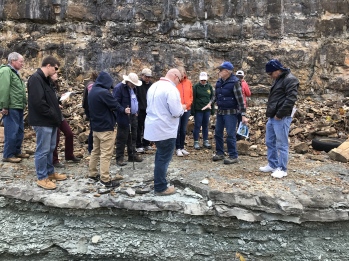
This workshop is presented by the Kentucky Paleontological Society and the Geological Society of Kentucky in conjunction with Morehead State University and The Geology Section of the Kentucky Academy of Sciences. Trip leaders are: Charles E. Mason, Morehead State University emeritus; Dr. Frank R. Ettensohn, University of Kentucky; Dr. Jen O’Keefe, Morehead State University; and Tim Lewis, retired petroleum geologist.
The field trip will explore the Upper Ordovician geology of eastern Kentucky at the famous but infrequently visited “Slate Valley” section in Bath County and provide opportunities to collect fossils for use in teaching and personal collections. On the return trip, there will be opportunity to collect additional rock types.
| Presenter: Joanne Dobbins |
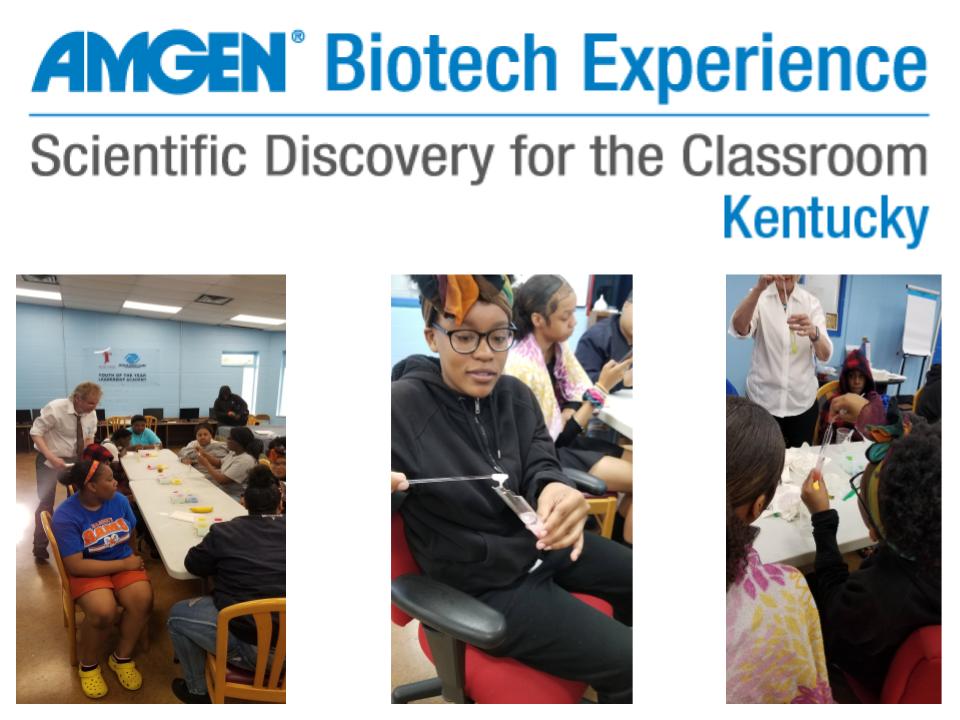 the ABE high-quality resources for secondary schools, including laboratory-based and classroom-based curriculum materials as well as Web-based resources. The program also loans research-grade equipment and supplies at no cost to teachers. We would like to provide a small sample of our Profession Development Institute that occurs every summer. Our program will offer one hands-on exercise using gel electrophoresis with our participants. We will provide the instruction, lesson planning, preparation, and equipment. Our program will provide state and national best practices standards and information. In addition we will make available a short demonstration of our vast reservoir of curriculums and resources for in-class and online instruction.
the ABE high-quality resources for secondary schools, including laboratory-based and classroom-based curriculum materials as well as Web-based resources. The program also loans research-grade equipment and supplies at no cost to teachers. We would like to provide a small sample of our Profession Development Institute that occurs every summer. Our program will offer one hands-on exercise using gel electrophoresis with our participants. We will provide the instruction, lesson planning, preparation, and equipment. Our program will provide state and national best practices standards and information. In addition we will make available a short demonstration of our vast reservoir of curriculums and resources for in-class and online instruction.| Presenter: Jennifer Birriel |
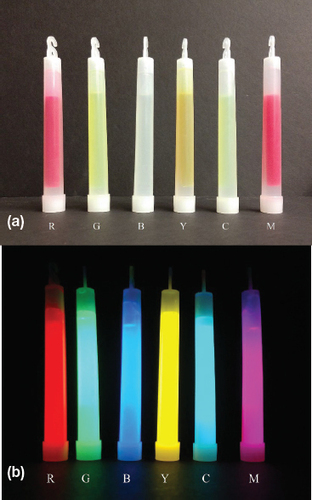 resented by the Kentucky Association of Physics Teachers.
resented by the Kentucky Association of Physics Teachers.This workshop uses glow sticks and spectra to analyze the dyes of the various colors of glow sticks. The audience is high school and introductory college physics teachers. Using glow sticks intrigues the students since they are something the students are already familiar with.
The workshop would include the following topics:
- Color Addition Theory
- Light/Matter interactions – absorption, reflection, and fluorescence
- Spectroscopy
- Scientific reasoning
| Presenter: Maegen Rochner |
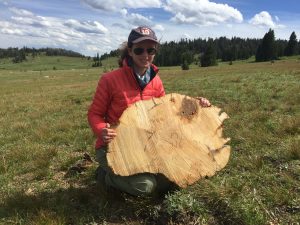 sustainability. Dendrochronology, the scientific method of dating tree rings, provides information on the ages of trees but also on the environmental conditions they have experienced over time, informing past climate and environmental change, but also modern stressors on trees and forests. The workshop will include hands-on examination of tree-ring samples and accompanying activities. Teachers will leave with their own tree-ring samples and copies of accompanying materials they can use in their classrooms, activity options targeted to middle and high school students.
sustainability. Dendrochronology, the scientific method of dating tree rings, provides information on the ages of trees but also on the environmental conditions they have experienced over time, informing past climate and environmental change, but also modern stressors on trees and forests. The workshop will include hands-on examination of tree-ring samples and accompanying activities. Teachers will leave with their own tree-ring samples and copies of accompanying materials they can use in their classrooms, activity options targeted to middle and high school students.glucose uptake and consequently lactate production. Tumor cells alter several other metabolic pathways, including serine synthesis. Over-expression of the enzyme phosphoserine aminotransferase 1(PSAT1) is in the second step in serine synthesis and affects tumor cell proliferation and motility. It is unknown whether altered PSAT1 has any effect on other metabolic activity, including mitochondrial function. Due to PSAT1's involvement in the TCA cycle via alpha-ketoglutarate (aKG), it was hypothesized that cells with dysfunctional PSAT1 will demonstrate changes in mitochondrial activity. Two EGFR-mutant cell lines - PC9 and HCC827 - consisting of 4 different genetic manipulations were analyzed by the mitochondrial stress test on an Agilent Seahorse analyzer. Additionally, cells were labeled with Carbon-13 glucose to track glucose specific carbon through metabolic pathways by mass spectrometry. Results indicated that suppression of PSAT1 reduced basal oxygen consumption rate (OCR), ATP-dependent OCR, and maximal respiratory capacity in both cell lines. Re-expression of wild-type PSAT1 restored these deficiencies, but only HCC827 cells showed reduced OCR levels with expression of putative PSAT1 enzyme dead mutant (K200A). Mass spectrometry revealed PSAT1 knockout and K200 cells expressed low levels of functional enrichment for the C13 isotopologues in both cell lines. These results indicate a clear association between PSAT1 and mitochondrial function, suggestive of a metabolic vulnerability due to loss of PSAT1.
Lennex-Stone, June E. (1),
Marriner, Emma (1),
Marsh, Christopher (1),
Patel, Alyssa (4), Smallwood, Liberty (7), Spears, Tyler M.(1), Tarlton, Laikin (6), VanderEspt, L. Olivia (7)
1 Department of Physics, Earth Science, and Space Systems Engineering, Morehead State University, Morehead, KY, USA.
2 Department of Geography and Environmental Sciences, Northumbria University, Newcastle upon Tyne, UK.
3 Laboratorio de Geología de Llanuras. Facultad de Ciencia y Tecnología, Universidad Autónoma de Entre Ríos, Sede Diamante. CONICET (National Scientific and Technical Research Council) Argentina.
4 Craft Academy for Excellence in Science and Mathematics, Morehead State University, Morehead, KY, USA.
5 Columbia University, New York, USA
6 Department of Biology and Chemistry, Morehead State University, Morehead, KY, USA.
7 Department of Agricultural Sciences, Morehead
Palynomorphs, including pollen, plant spores, and dinoflagellates are widely used paleoclimatological proxies because they provide a regional-scale signal. Within the spectrum of organismal remains classified as 'palynomorphs' in the fossil record, fungi provide a unique opportunity to elucidate a local, rather than regional signal. Historically, paleoclimatological interpretations using fossil fungi have been hampered by datasets which relied on fossil names, many of which were derived from Sarccado spore morphologies and had no relation to extant taxa. Beginning with the North-South America comparing Climate change across Hemispheres (NSACH) project and continuing with the Fungi in a Warmer World (FiaWW) project, our collaborative team has developed an identification method based on the system used by mycologists for morphological comparisons to equate defined fossil taxa with their nearest living relatives and to identify previously unidentified fossil taxa as members of extant fungal clades. This permits the delineation of ecological requirements and paleobiogeographic distribution patterns for fungal assemblages and functional guilds in the fossil record, which can then be used to describe both paleoecological conditions and paleoclimates present at the time of deposition using the nearest living relative method. Here we present an overview of results from the Holocene of Kentucky and Miocene across North America that demonstrate the utility of fossil fungi as reliable paleoclimate proxies.
We describe work-in-progress improvements to the CURatio software that aim to improve the usability and functionality of the software. On the usability side, we have implemented a command-line interface to make it easier to use the software in scripted pipelines, as well as options to visualize the constructed phylogenetic trees. Functionality improvements include better support for paralogs, multiple copies of the same gene in a single organism. We have also introduced additional functionality for testing the algorithm, specifically by permuting the positions of organisms in the trees to observe the effect on the scores assigned to those trees.
We discuss the development process as well as the results of some preliminary testing of our improvements.
The second section will detail the exploration of the trick with more than one deck of cards. The application of modular arithmetic and combinatorics will be described first with two decks, then three, and four. The third and final section will be a full explanation on how the FTCT works with any size n deck of cards. The description of the trick will be described and then it will be proven that the three selected cards will be in the deck positions x, y, and z. The final section is still in progress but will be referenced during the presentation.
Registration & Abstracts
2025 Keynote Speaker
2025 Sponsors & Exhibitors
Social Media Photo Contest
Publish Your Research
Under 18 Waiver
See you in 2026 at Murray State University!!

2025
